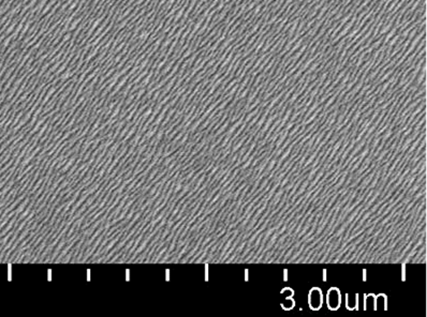Laser systems often utilize waveplates to control the polarization of the light, and, when used in conjunction with other optical elements, they can be used to control the transmitted laser power. However, conventional birefringent materials have some limitations, namely: (1) optical materials exhibiting natural birefringence often have a low laser-induced damage threshold, placing an upper limit on the laser power the system can safely use before the waveplate, and (2) these specialized materials exhibiting bulk birefringence tend to be pricier for shorter wavelengths.
This invention consists of a method of forming nanoscale metal lines to produce a grating-like mask with wide area coverage over the surface of a durable optical material such as fused silica. Subsequent etching processes transfer the metal mask to the underlying substrate forming a birefringent metasurface. This method enables the production of ultrathin waveplates for high power laser applications operating at ultraviolet wavelengths and shorter.
Related LLNL technologies available for licensing
- Thin planar optical components generated with substrate-engraved metasurfaces
- Birefringent Waveplate and Method for Forming a Waveplate Having a Birefringent Metasurface
- Method of producing optical element with thicker substrate engraved metasurface layer
- Low-temperature fabrication method of bulk metamaterial structures for heat sensitive materials technology
- A Novel Method for Forming Waveplates from Common, Durable, Isotropic Optical Materials
Image Caption: Scanning electron micrograph of scalable, grating-like nanoscale metal mask (line period ~35 nm)
- Enables production of wide area waveplates from non-natively birefringent substrates like fused silica.
- Enables highest laser damage threshold operation consistent with the properties of the metasurface substrate material.
- Enables very short ultraviolet wavelength operation and even the shorter soft X-ray spectral regime.
- High laser damage threshold waveplates for manipulating light polarization in hitherto unachievable short wavelength regimes.
- Waveplates enabling high energy lasers used in EUV Lithography and Inertial Fusion Energy markets.
Current stage of technology development: TRL 2-3
LLNL has filed for patent protection on this invention.


